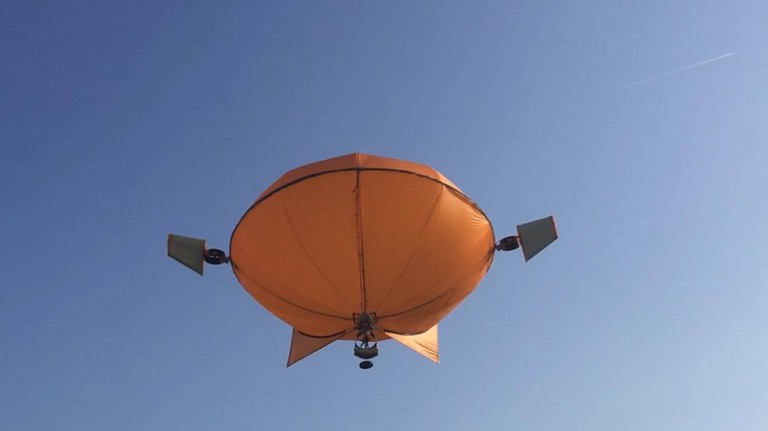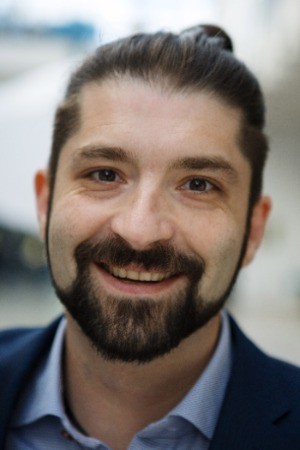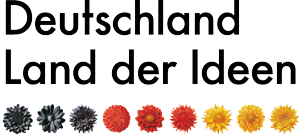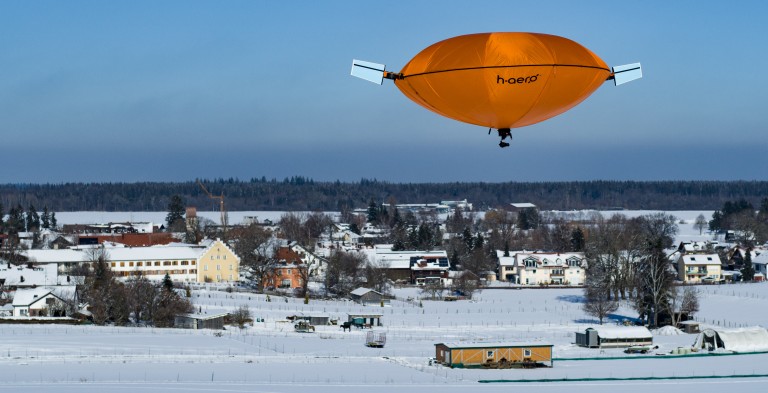I haven’t come across many start-ups that are such a good example of the term “lean start-up” as HAT. With a minimum use of funds, this company was able to bring a totally new category of aircraft to the market that outperforms all designs that have so far been presented by large international aerospace companies with much fanfare.
Paul Holger Brée, CFO, Hybrid-Airplane Technologies GmbH (HAT)

h-aero is a hybrid airplane that, as an LTA-UAV (lighter than air unmanned air vehicle), for the first time combines the proven physical flight principles (airplane, helicopter, airship) and minimizes energy consumption by combining static and dynamic uplift. The unique technological feature position of all current h-aeros is illustrated by the fact that nobody else in the world is able to make smaller LTA-UAVs fly. The secret is an extremely lightweight construction and the knowledge of design algorithms for a clever system layout. h-aeros differ from drones in having significantly longer operating times and very low levels of acoustic and electromagnetic signatures.
They can be deployed in many and varied fields – from aerial advertising through nature and earth observation to the mapping of areas or the exploration of inaccessible areas. h-aeros include a wide range of special sensors and technology and communicate via 4G/5G satellites. A h-aero is thus a floating cybernetic robot for aerial data collection. In addition, the systems are so safe that they have received a safety certificate to fly indoors over crowds of people.
The development potential of h-aeros does not end with the current product family. It is restricted neither in terms of dimension, load-carrying capacity or velocity nor in the altitude it can reach.
Good to know
- Hybrid-Airplane Technologies GmbH was founded by Dr Csaba Singer in 2016 as a Stuttgart University spin-off.
- The company works mainly with freelancers who support the company with their enthusiasm.
- It was not founded in a garage but in the head of its founder, accompanied by the practical work and collective skills, knowledge and encouragement of his co-workers.

Interview with Dr. -Ing. Csaba Singer, CEO, CTO und Co-Founder, Hybrid-Airplane Technologies GmbH
How did you come up with the idea for your project?
The origin of my idea was that I was dreaming of energy-efficient flying that uses the static uplift provided by helium. But, in contrast to an airship, I wanted to make use of the dynamic uplift, too, and the vehicle should be incomparably agile. The idea of giving the h-aero family its characteristic lentoid shape was thus born.
What challenges did you face during implementation?
In addition to the parameterization of the algorithms for the design of the aircraft, another great challenge was to develop a lightweight technology that not only limits the weight of the bearing structures but also gives them high stability and makes it possible to carry relatively large masses.
Where do you see your project in five years?
That is difficult to predict, but the more sustainable and more environmentally friendly the better. Our focus is on agricultural as well as industrial inspections such as the observation of forest areas to prevent fires or the overflying of industrial plants with thermal cameras to detect heat leakages. Being able to fly over crowds was of course an important factor for the event sector – and we hope this will be the case again in the future. But the potential fields of application are more numerous than we can imagine. We thus need to listen to our clients who inform us about their needs and wishes. We will then create the solution.
What is your advice for others who have a good idea and want to translate it into action?
You will not know if an idea is really good until you try to realize it. Erich Kästner once said: “There is nothing good unless you do it.” This is also true for entrepreneurial ideas, which will only find their way into life through entrepreneurial action. The way is hard and includes an endless loop of ideas, testing, learning – and a new idea. But what could be better than mastering the numerous challenges – against all statistical probabilities of a start-up?



